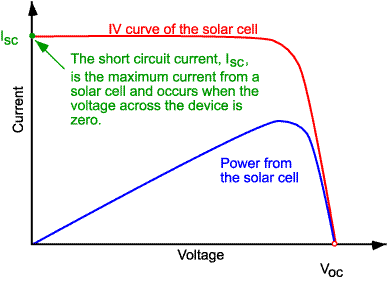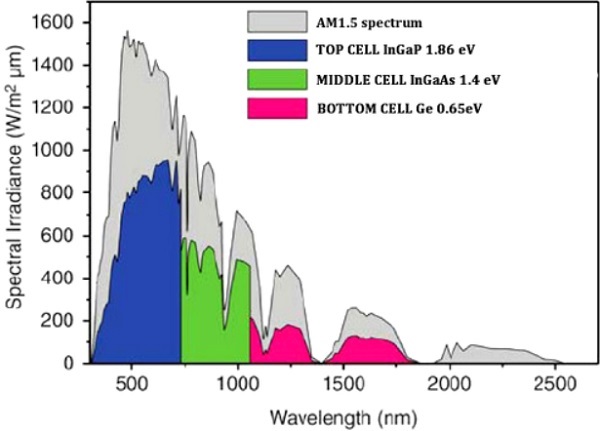Instead of being constructed from solid silicon wafers like mono or poly crystalline solar panels amorphous panels are made by depositing non crystalline silicon on a substrate like glass plastic or metal one layer of silicon on an amorphous solar panel can be as thin.
Silicon solar panel absorption spectrum.
D 500 nm.
At short wavelengths below 400 nm the glass absorbs most of the light and the cell response is very low.
Opticals gaps deduced from absorption spectra are between 0 8 ev and 1 50 ev depending on the precursor and deposition temperature.
At long wavelengths the response fall back to zero.
Because solar cells are semiconductor devices solar cells are spectrally selective absorbers implying that in principle the absorption factor of the absorbers in a pvt combi panel is lower than the absorption factor of a black absorber in a conventional solar thermal collector.
Because of band to band absorption the absorption coefficient for.
The example used in the figure is an a si h layer with a thickness.
At intermediate wavelengths the cell approaches the ideal.
But solar panels only use a small portion of ultraviolet.
The spectral response of a silicon solar cell under glass.
These are values in the range characteristic of solar energy panels.
What electro magnetic waves are absorbed by a solar cell.
Shown to the left is the complete spectrum of electro magnetic.
A team of researchers from george washington university has devised a new layered solar panel that can absorb light from a wider range of the spectrum pushing the efficiency as high as a stunning.
John purchasing bucknell signs my customer needed a solar billboard lighting solution i originally just ordered a few spot lights of amazon which didn t work.
Why uv panels are a con job.
We use these spectra to find out how much solar energy is absorbed by layers of varying thickness.
36 annealing and crystallization processes in tetrahedrally bonded binary amorphous semiconductors are also being investigated.
Finally there are some losses due to manufacturing impurities in the silicon.
Like conventional solar panels amorphous solar panels are made from silicon but they are constructed in a different way.
The silicon atoms in a photovoltaic cell absorb energy from light wavelengths that roughly correspond to the visible spectrum.
In addition there are some losses at the junction of the silicon cell with the electrical contacts that carry the current to the load.
Sunlight energy that reaches the ground is around 4 ultraviolet 43 visible light and 53 infrared.
The silicon solar team was friendly and prompt with a simple and effective solar sign lighting system.
α 1 d.
Such a layer absorbs essentially all photons with energies greaterthan 1 9 ev the energy at which.







